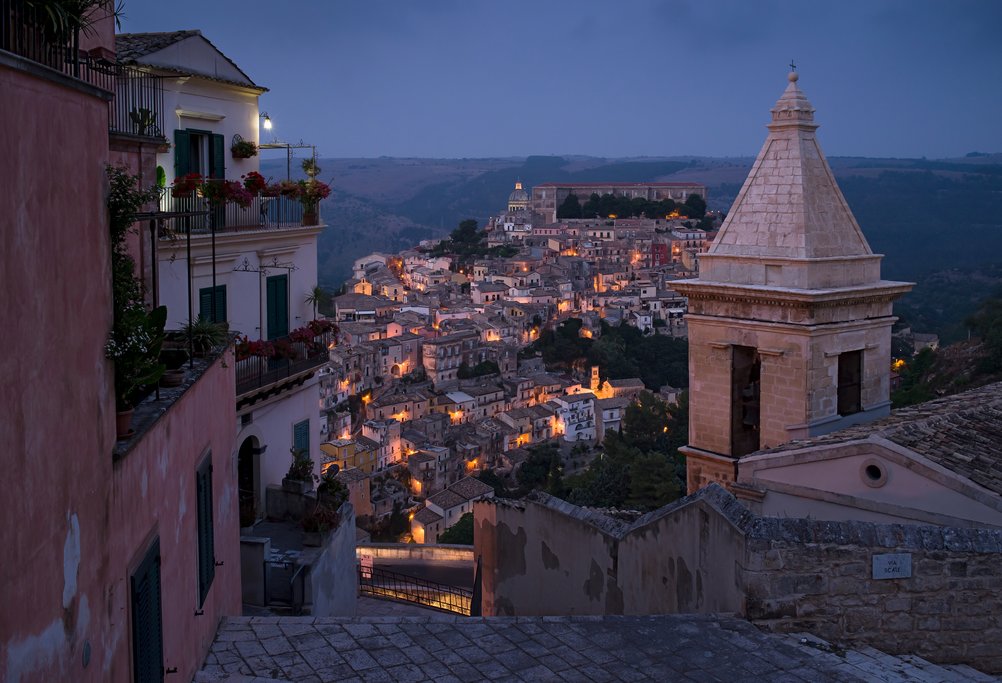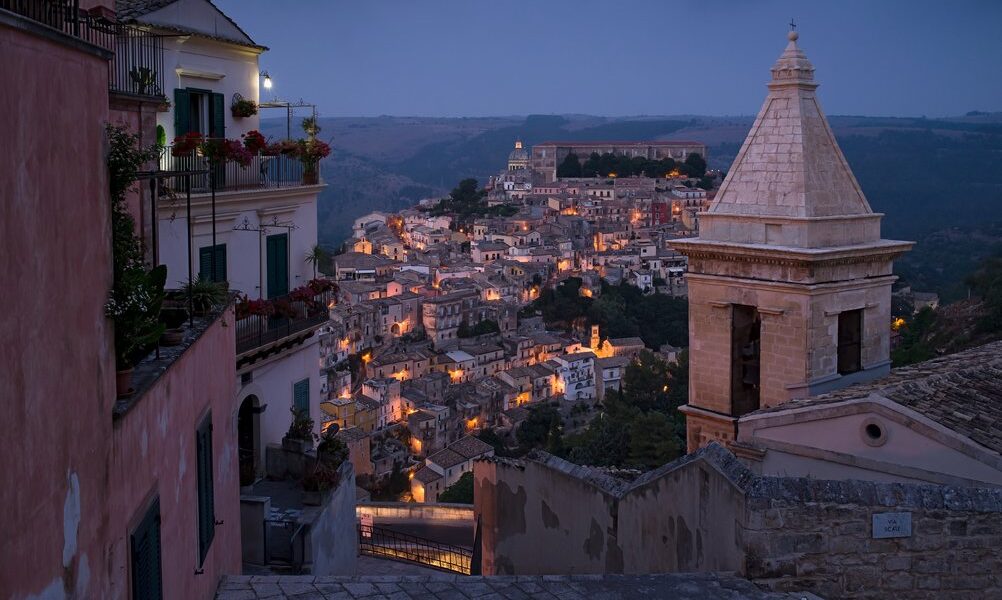
February is the tail end of Sicily’s short winter, offering snowy adventures on the island’s highest peaks, blossoming almond trees in the south, and massive festivals—as well as fewer tourists and lower prices. A predominantly Catholic region, Sicily gets into festive spirits around Lent and Carnivale, kicking off the coming of spring with Mardi Gras celebrations across the country. Find out what to do and where to go with this February guide._x000D_
Weather in Sicily During February
February in Sicily offers a climate that is quite similar to January, presenting travelers with a unique and often less crowded experience of this beautiful island. Average temperatures generally hover between 42-54°F (5-12°C) across most of the island. However, it’s important to remember that Sicily’s diverse topography creates microclimates, so variations can be expected. In Palermo, for example, the average temperature range is a slightly warmer 48-59°F (9-15°C), making it a potentially pleasant location for exploring the city’s historical sites and enjoying its vibrant culture. While the seasonal rains begin to lessen compared to the earlier winter months, it’s still wise to pack accordingly and be prepared for occasional showers.
The coastal areas of Sicily tend to experience milder weather than the inland regions, with slightly higher rainfall. This is due to the moderating influence of the sea. Conversely, the hilly interior of the island, such as around Prizzi, sees cooler temperatures, with an average range of 36-46°F (2-8°C). Travelers venturing into these areas should be prepared for brisk mornings and evenings.
For those planning to visit the higher altitudes, particularly Mount Etna, expect significantly colder conditions. The slopes of the volcano are typically snow-laden in February, creating ideal conditions for skiing. This attracts ski enthusiasts to the resorts located on the mountain.
It is also important to be aware of the potential for strong winds blowing in from the Balkan Peninsula. When these winds are present, temperatures along the coast can temporarily plummet to freezing. Despite this possibility, it is not entirely uncommon to find moments of sunshine that are perfect for relaxing on the beach. However, the sea temperature remains relatively cool at around 59°F/15°C, making swimming less appealing. Overall, February weather in Sicily is unpredictable, requiring flexibility and the ability to adapt plans as needed.
Crowds and Costs in Sicily During February
February is considered part of the off-season in Sicily, making it an ideal time to visit for travelers seeking to avoid large crowds and benefit from lower prices. The absence of significant tourist throngs means visitors can enjoy unobstructed views of the stunning coastlines and have more personal encounters with the local culture. The lack of crowds also allows for more relaxed exploration of historical sites and museums.
Accommodation, car rentals, and airfare typically see substantial price reductions during February, making a trip to Sicily more budget-friendly. However, it’s essential to be aware that many hotels, restaurants, and attractions in resorts and smaller towns heavily reliant on tourism, such as Erice and San Vito Lo Capo, may be closed for the season or operate on reduced hours. Ferries also tend to run on a reduced schedule during this period. Careful planning and advance inquiries are therefore recommended.
Skiing becomes a popular activity for locals in February. They flock to the slopes of the Madonie mountains and Mount Etna. Unlike more well-known ski destinations in Italy, the slopes in Sicily are less crowded, and passes are typically inexpensive. This offers an opportunity to experience a unique aspect of Sicilian culture and scenery.
Similar to other southern European countries, Sicilians observe the tradition of siesta year-round. Visitors should expect that many businesses will be closed between 1:30 pm and 4:30 pm daily. It is useful to plan activities accordingly, such as visiting historical sites in the morning and evening.
Travelers visiting the island during Carnival and St. Agatha’s Feast Day in Catania should book accommodations and restaurant reservations well in advance. Despite being off-season, these events attract significant crowds. Early planning is advisable to ensure a comfortable and enjoyable experience.
Where to Go in Sicily During February
During Italy’s version of Carnivale, Sicily comes alive with celebrations across the island. These festivities often extend for several days, creating a festive atmosphere. For one of the most renowned pre-Lent celebrations in the country, visit Acireale, a town situated north of Catania between Mount Etna and the sea. Here, visitors can marvel at massive allegorical floats, costumed participants, and giant papier-mâché caricatures of famous personalities.
Other towns that host notable Carnival celebrations include the sophisticated resort town of Taormina on the Ionian Sea and Sciacca, a historic fishing port in the northwest with origins tracing back to the Roman Empire. Each location offers its unique interpretation of the Carnival tradition, adding to the richness of the Sicilian cultural experience.
Catania celebrates the Festa di Sant’Agata (Feast of St. Agatha) at the beginning of February. It is one of the world’s largest festivals. Crowds of up to 1,000,000 devotees gather in the city to pay homage to the martyred woman and participate in the festivities. These festivities include processions, choirs, food, and fireworks.
While Sicily may not be as well-known for skiing as its northern Italian counterparts, the region boasts three resorts with runs suitable for various skill levels. The skiing conditions are favorable due to the mild weather, fewer crowds, and affordable passes. Skiing on an active volcano is a unique experience, and visitors can choose between two resorts on Mount Etna: Nicolosi on the southern side and Linguaglossa on the northern side.
If the weather conditions are not conducive to skiing, a visit to the south coast for the Agrigento Almond Blossom Festival is a good alternative. It may even afford an opportunity to relax on the beach. Sicily has something for everyone.
What to Do in Sicily During February
February offers a wonderful opportunity to experience local Sicilian life due to the lack of competing tourists. Travelers can take advantage of available house rentals or agriturismo listings. Consider spending a few days on a farm to immerse yourself in the local culture. Renting a car will provide the most flexibility for this type of experience.
Hotel and restaurant service may be more attentive during the off-season. Take this opportunity to build relationships with your server and enjoy local and seasonal cuisine without being rushed. Sample dishes like sea urchins and freshly baked pasta reale (almond marzipan pastries, traditionally made during the time of the blossoming almond trees).
Explore Sicily’s vast array of archaeological, historical sites, medieval, and Baroque city centers while the weather keeps the tourist numbers lower. Visit the Valley of the Temples in Agrigento. Explore the fifth-century BCE Greek theater in Syracuse’s Neapolis Archaeological Park. Wander through the narrow, winding streets of Ragusa Ibla, Modica, and Scicli. These towns provide excellent examples of the Sicilian Baroque architectural style.
For arts enthusiasts, opera season begins this month, and a number of premium theaters will be hosting important works. Consider visiting Teatro Massimo in Palermo, which is Italy’s largest opera house. From the regional capital, head down the western coast to the salt flats of Trapani. A walk among the dazzling checkerboard of saltwater basins during sunset will provide a breathtaking experience.
Events in Sicily During February
Carnevale: This annual celebration, held 40 days before Easter, takes place sometime between January and April, often falling in February. Carnival is the largest event of the month, with celebrations happening in cities and towns across the country.
St. Agatha’s Feast Day: Beginning on February 4 in Catania, locals spend a week celebrating Saint Agatha, a martyr who died in the third century. A procession carries a silver carriage containing her relics up Monte Sangiuliano, followed by merrymaking and fireworks. It is one of the largest religious processions in the world.
Almond Blossom Festival: Agrigento hosts this weeklong festival from the first Sunday through the second Sunday of the month. Traditional Sicilian sweets made with almonds are served, and an international folklore festival takes place simultaneously. There is live music, parades of people in historical costumes, shows, craft exhibits, and fireworks.
B-1349

